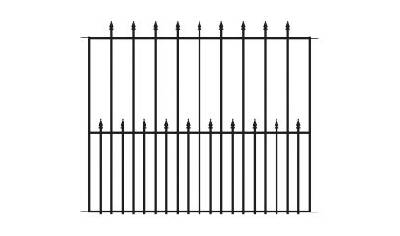Factors Influencing the Price of Barbed Wire and Its Market Trends
Oct . 04, 2024 19:47
Understanding the Costs of Barbed Wire Factors and Considerations
Barbed wire has been a staple in agricultural and security practices for over a century. Its primary use in fencing livestock and securing property has made it indispensable for farmers, ranchers, and property owners alike. However, the cost of barbed wire can vary significantly based on several factors, which is crucial for buyers to understand to make informed purchasing decisions.
1. Material Composition
The cost of barbed wire is largely influenced by the materials used in its production. Most barbed wire is made from low-carbon steel, which is coated with zinc to prevent rust and corrosion. The thickness of the wire and the quality of the coating can significantly affect the price. For instance, heavier-gauge wire that's more resistant to breaking will generally cost more. Some manufacturers offer specialty coatings, such as vinyl or plastic, which may increase the price further but provide enhanced durability and aesthetics.
2. Type and Size of Barbed Wire
There are various types of barbed wire, including standard barbed wire, high-tensile wire, and electric barbed wire. High-tensile wire, which offers superior strength and durability, is often more expensive than standard barbed wire but can be more economical in the long run due to its longevity. Furthermore, the size of the wire also plays a crucial role in pricing. Barbed wire typically comes in rolls, and larger rolls may offer better value per foot compared to smaller rolls, making it essential to consider the quantity needed for your specific project.
3. Market Demand and Location
barbed wire cost

The cost of barbed wire can fluctuate based on market demand and regional availability. In areas where agriculture is booming, the demand for fencing solutions may drive prices up. Conversely, in regions where farming activities are declining, prices may stabilize or even drop. Additionally, transportation costs can influence pricing, especially if the wire must be shipped from a distant manufacturer.
4. Supplier and Brand
The choice of supplier can significantly impact the cost. Well-known brands may charge a premium for their reputation and perceived quality, while lesser-known manufacturers may offer competitive pricing. It's essential to balance cost against quality; ultra-cheap options may not provide the durability needed for long-term applications, leading to higher replacement costs down the line.
5. Installation and Additional Costs
Finally, when considering the total cost of barbed wire, installation should not be overlooked. Hiring professionals for installation can increase the overall expense, but it may pay off in terms of proper setup and longevity. Additionally, buyers should consider posts, gate access, and any legal permits or zoning regulations that may apply—these can add to the total cost of securing a perimeter with barbed wire.
Conclusion
In conclusion, the cost of barbed wire is influenced by various factors, including material composition, type, size, market demand, supplier brand, and installation requirements. By understanding these aspects, buyers can make informed choices that align with their budget and project needs. Whether for securing livestock or enhancing property security, selecting the right type of barbed wire is crucial for achieving a balance between cost and functionality. Always consider the long-term investment over short-term savings to ensure a durable and effective fencing solution.




















